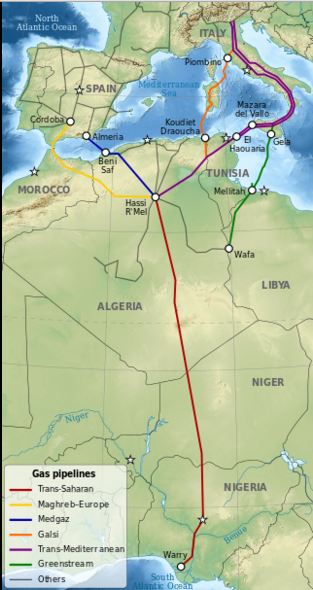Very often you
hear people talking about wars of religion, for both the wars of the 20th
and the 21st centuries. I would like to give some examples about why
it is very wrong to describe these wars as wars of religion. At the following
map I have marked with red the West Central Asia, a region predominantly Muslim,
which came under Russian control in the 19th century, and remained
under Russian control until the collapse of the Soviet
Union in 1991. East Central Asia, also a region with Muslim
majority, today called the Xin Jiang Province of China, came under Chinese
control and remains under Chinese control to this very day. The Turkish
nationalists call Xin Jiang “East Turkestan” and consider it as a region that
should be under Turkish influence, as the rest of Central
Asia should be according to them.
Map 1
At the map
you can also see with green another predominantly Muslim region, which was
controlled by the Ottomans until the First World War 1914-1918, when it came
under British and French control, after the Ottoman defeat.
What we
observe during the 20th and 21st century wars is that the
Russian Christians supported the Muslims to drive away from the Middle East the English and French Christians. We also
observe the English and the French Christians, and also the American
Christians, supporting the Muslims of Pakistan and Afghanistan
in order to drive away from Central Asia the
Russian Christians. In all that we cannot see wars of religion. We can only see
wars between the West and the Soviet Union .
But if we do not look at the big picture, and we focus on regional wars, we
might think that this is about wars of religion.
Today we
might once more think that we are dealing with wars of religion, but that’s not
true either. For instance Russia ,
France , England and Germany
might have started aligning against Turkey ,
which is the greatest military power of the Muslim world, but the United States
It is true
that the Americans and the Turks have many problems in Syria and Iraq Syria Iraq Russia
At the
following map you can see the Sunni, Shiite (Shia), Alawite and Kurdish parts
of Syria and Iraq
Map 2 Alawites,
Sunnis, Shiite (Shia) and Kurds of Syria
and Iraq
Some
analysts predict that the Americans might have to cooperate with Russia in the future, because all of the US allies in Europe
are already doing it to some extent. This might happen in the future, but
that’s not what we see for now. Note that the cooperation between Russia , France ,
Germany and England Turkey and ISIS
even though they have many differences among them.
For all of
us who live in Europe, especially the ones living near Turkey England
(Labour Party), Pablo Iglesias in Spain Soviet
Union most of the leftists turned to the Islamists. Actually the
Islamists pay better than the Soviets used to.
Note that
Islamic countries i.e. countries where the Koran is the law, fall into two
categories i.e. the Islamic Monarchies and the Islamic Republics. Islamic
Monarchies are countries where the Koran is the law and they have kings
(monarchs) as their leaders. Islamic Republics are the equivalent of the
communist countries in the Muslim World. Communist countries are called
Democratic Republics or People’s Republics, and the equivalent in the Muslim
world is the so called “Islamic Republic”. Communism almost bans religion and
communism is normally not very welcome in the Muslim World.
People’s
Republics and Islamic Republics have almost the same economic models, but the
Koran is the law of the Islamic Republic, while religion is almost non existent
in the People’s Republics, where the law is the General Secretary of the
Communist Party. Saudi Arabia ,
Qatar , United Arab Emirates,
Kuwait etc are Islamic
Monarchies, and Iran , Pakistan and Sudan Turkey Turkey
Today the
communist leaders are cooperating very well with Islamists leaders. I have
mentioned before that a Greek Member of Parliament, Kostas Zouraris, an ex-member
of the Greek Communist Party, and currently a member of the governing
coalition, clearly supported the Jihadists who carried out the terrorist
attacks in Paris (November 2015). Kostas Zouraris called the Jihadists fighters
of freedom and dignity who fight against the French colonialists. All European
communists would agree with him, even though they would not openly admit it.
Before the
collapse of the Soviet Union in 1991, communists would normally support
socialist terrorists who were trained by Muammar Gaddafi in Libya , Hafez Assad in Syria ,
Saddam Hussein in Iraq ,
Yasser Arafat in West Bank and Gaza Qatar
The thing
is that communists and Islamists see us in exactly the same way. They believe
that our countries are not really countries but a sum of corporations, and that
we are so corrupted and greedy that we would even be willing to sell our own
mothers for money. Nothing from what I say seems to be a war of religion. The
main element is always the economic and the cultural.





















